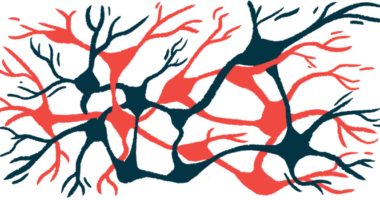Measuring eye movements may help track Parkinson’s progression
Slower movements tended to equate with more severe MDS-UPDRS scores

A platform developed by NeuraLight that uses machine learning to measure eye movements may help track the progression of Parkinson’s disease, a study shows.
“NeuraLight’s technology enables us to assess the patient’s neurological status in a sensitive and objective way. The results of this study mark an important step on our path to knowing more about our Parkinson’s patients’ disease status, and we hope to continue our efforts to harness NeuraLight’s platform in our clinical practice,” Ruth Djaldetti, MD, co-author of the study at Rabin Medical Center, Israel, said in a press release.
The study, “Oculometric measures as a tool for assessment of clinical symptoms and severity of Parkinson’s disease,” was published in the Journal of Neural Transmission. The work was funded by NeuraLight and four of its authors are affiliated with the company.
Parkinson’s is caused by the progressive death of certain cells in the brain, which disrupts normal brain signaling and gives rise to disease symptoms. People with Parkinson’s tend to have slower and less accurate eye movements as the disease progresses. This suggests that measuring differences in eye movements could track its progression.
Eye movements and disease progression
NeuraLight has developed a computer-based oculometric test, which tracks eye movements through facial videos captured with a standard webcam and analyzes them using machine learning techniques.
As part of a study (NCT05437003) of 215 people with Parkinson’s disease (mean age, 69), the researchers assessed whether NeuraLight’s test scores matched standard assessments of disease severity with Parkinson’s. In the study, 150 patients had mild to moderate disease and 65 had more severe disease. Another 215 people without Parkinson’s were included as controls.
Parkinson’s patients tended to have slower eye movements compared to those without the disease. Eye movements were also slower among those with more severe disease than with mild to moderate disease.
Parkinson’s patients also had a greater tendency to initially look at the wrong place, which was more pronounced with more severe disease.
Statistical analyses showed a moderate correlation between eye slowness as measured by NeuraLight’s test and scores on the Movement Disorder Society-Sponsored Revision of the Unified Parkinson’s Disease Rating Scale (MDS-UPDRS). In other words, those with slower eye movements tended to have more severe MDS-UPDRS scores, which is a clinician-assessed measure of Parkinson’s symptom severity.
“Different oculometric data of [Parkinson’s] patients were found to be worsened as disease severity increases and correlated with MDS-UPDRS motor scores,” the researchers concluded, adding the data support eye movement tests like NeuraLight’s to measure Parkinson’s disease progression.
A notable limitation of the study was that the researchers only assessed patients at one point in time, instead of following them over time. The scientists emphasized a need remained for long-term studies to see how well the eye test can track disease progression over time.
NeuraLight is sponsoring a clinical trial called PALOMA (NCT05862649) that intends to use the test to track progression over time and see how well its results match up with MDS-UPDRS and other standard clinical scores. It’s expected to enroll about 300 people with Parkinson’s.







